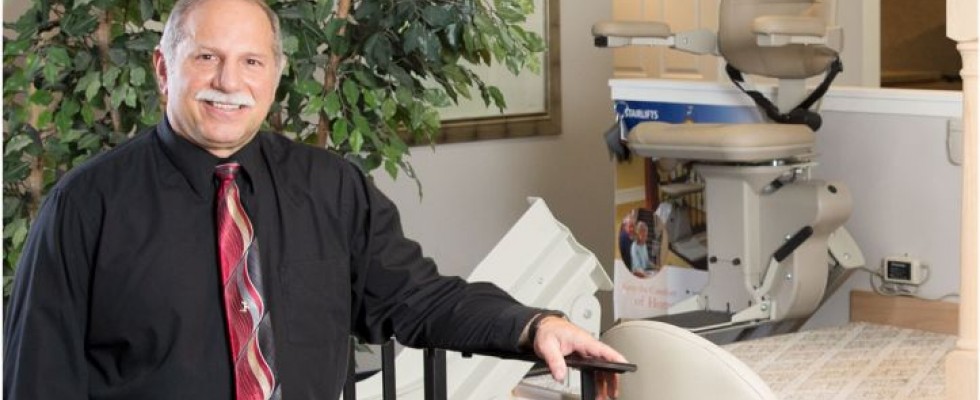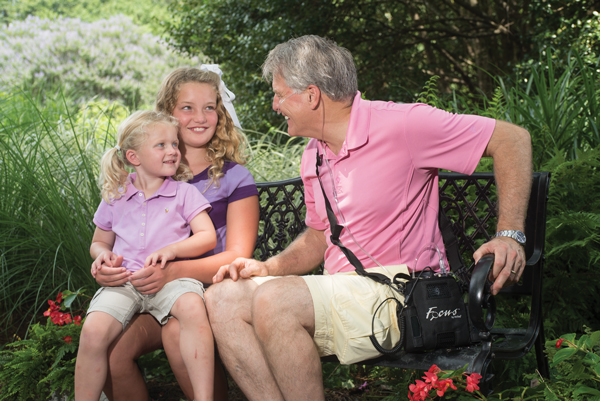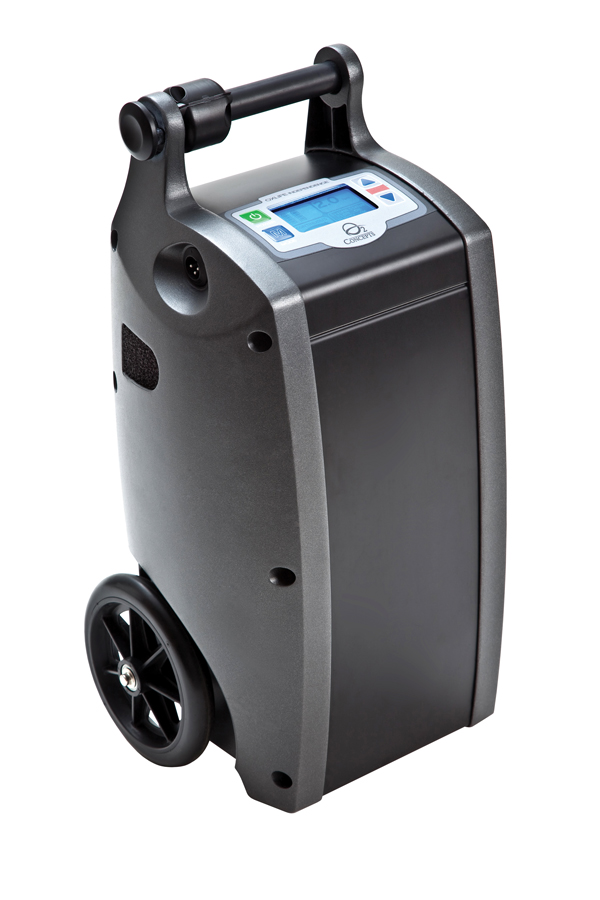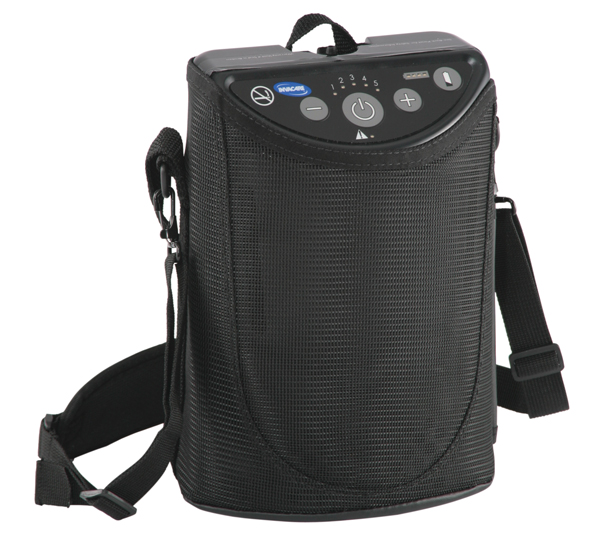
As a result of competitive bidding, reimburåsement is down significantly, although demand for oxygen services remains steady. Operating within the current system requires home oxygen providers to be innovative, efficient, low-cost operators. Product developments include better oxygen output in smaller, lighter packages; improved durability and reliability with limited service and maintenance needs.
CAIRE Inc.
Brett Townsend, Sales and Marketing Director www.chartindustries.com
 The AirSep Focus is the lightest weight POC on the market.
The AirSep Focus is the lightest weight POC on the market.HC: What trends do you see on the horizon in the portable oxygen market this year? BT: We expect to sustain growth in POCs as companies move away from transfill systems and delivery modalities. Innovation in POCs will continue; for example, our AirSep Focus is the lightest weight POC (1.75 lbs), and our new SeQual Equinox provides verbal confirmation of setting and status. HC: What challenges do you anticipate? BT: Reduced reimbursement is causing consolidation in HMEs and manufacturers. Diverse and efficient business models are key to surviving the downward reimbursement pressure—thus, moving to an efficient nondelivery business model is key. Also, pairing a POC and stationary concentrator in the home is optimal. HC: How is your company staying competitive? BT: Chart is successful in the portable oxygen market by focusing on innovation and delivering products that provide clinical and lifestyle advantages for the patient, while still fitting into a successful HME's business model. All five of our portable oxygen concentrators have E1390 and E1392 HCPCS codes. Our most recent product is the SeQual Equinox, offering the lightest continuous flow 3 lpm POC.
Philips Home Healthcare Solutions
Eli Diacopoulos, General Manager of Respiratory Care www.usa.philips.com/healthcare-solutions
 SimplyGo weighs 10 pounds and offers continuous flow/pulse-dose delivery.
SimplyGo weighs 10 pounds and offers continuous flow/pulse-dose delivery.HC: What trends do you see on the horizon in the portable oxygen market this year? ED: As patients are diagnosed earlier in the disease cycle, many are looking for oxygen therapy solutions that support their lifestyle and activities. To that end, POCs are becoming lighter weight and easier to transport. Many are also paying out of pocket. We anticipate the demand to grow, and for manufacturers and HMEs to respond accordingly with the products they offer. HC: What challenges do you anticipate? ED: The industry must plan for changes related to the Round 2 recompete, as well as the 2016 national competitive bidding process. Businesses need to study their complete COPD patient and oxygen delivery model for efficiency. This means changing or adapting traditional business models, and considering a plan that also accounts for expansion into areas, such as ventilation, sleep and/or consumer self-pay. HC: How is your company staying competitive? ED: In an effort to assist HMEs in addressing patient desires while streamlining operations, Philips continues to invest in new product development to bring oxygen innovations to the global market. Products will launching in 2015 and 2016.
O2 Concepts
Rob Kent, CEO www.o2-concepts.com
 The Oxlife Independence features the longest battery life in its class.
The Oxlife Independence features the longest battery life in its class.HC: What trends do you see on the horizon in the portable oxygen market this year? RK: New technologies are crucial to the future of the portable oxygen industry—they offer substantial benefits to both the dealer and patient sides, helping dealers become more cost-efficient and substantially improving patient outcomes. HC: What challenges do you anticipate? RK: Like all health care manufacturers, we are facing the basic question of how to reduce costs and continue to maintain high levels of care and customer service. HC: How is your company staying competitive? RK: We are currently rolling out our new Oxlife Independence with Dynamic Network Analysis (DNA) technology. DNA will link our machines to a central secure server via the Verizon network. Because our device is a 24/7 nondelivery solution, providers can bill for both 1390 and 1392 without having to deploy a stationary machine. With DNA, providers can access location, usage and maintenance data to optimally monitor and deploy their nondelivery equipment.
Invacare
Bob Messenger, Manager of Respiratory Education www.invacare.com
 The XPO2 POC is FAA-approved for air travel.
The XPO2 POC is FAA-approved for air travel.HC: What trends do you see on the horizon in the portable oxygen market this year? BM: Due to a modern and increasingly mobile customer base—creating the need for convenient, effective on-the-go care—we fully anticipate continued growth in the portable oxygen space in the foreseeable future. HC: What challenges do you anticipate? BM: We expect retail sales will remain strong; however, overall growth will begin to slow as more traditional HME providers feel the sting associated with higher rates of repair and the cost of battery replacement. Transfill systems will continue to maintain steady growth and may expand by filling the space left by slowing POC sales. HC: How is your company staying competitive? BM: Invacare continues its commitment to nondelivery oxygen. For example, Invacare incorporated some new enhancements to the XPO2 portable oxygen concentrator. The result has been improved battery performance, both in terms of prolonged operating time as well as expanding the lifecycle. Additionally, bolus volumes were enhanced to provide better oxygen delivery.
